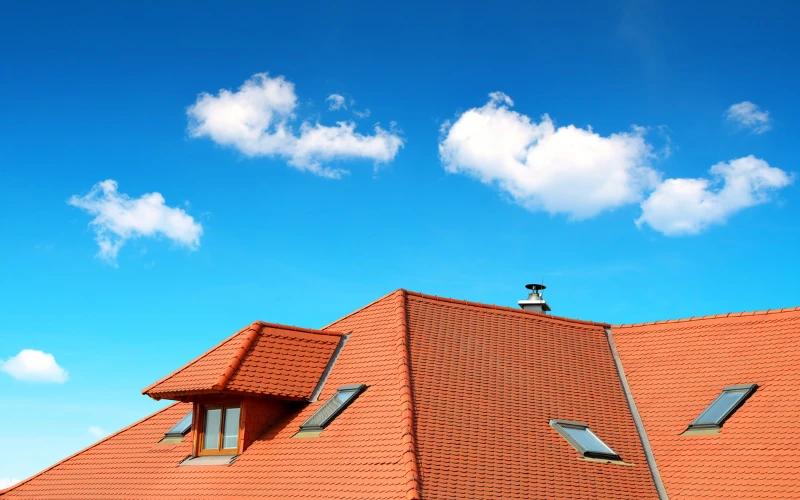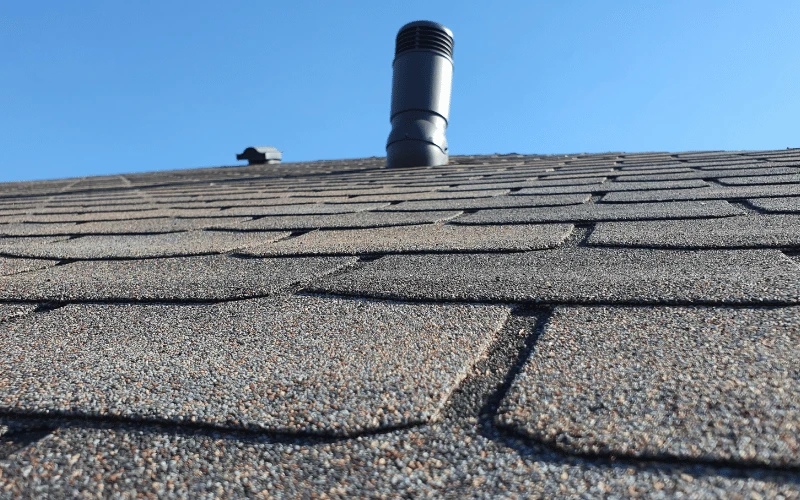As environmental consciousness takes center stage, we, as homeowners, have a pivotal role in adopting sustainable living practices that extend to every corner of our homes.
The roof over our heads, quite literally, is an area ripe for green transformation. Eco-friendly roofing options not only minimize our environmental footprint by using sustainable materials and reducing waste but also offer energy efficiency advantages.
By selecting the right eco-conscious roofing materials, we can decrease energy consumption, leading to a positive effect on our utility bills and comfort level.

Our commitment to the planet is evident in the choices we make for our homes. Understanding the various types of eco-friendly roofing materials available is crucial for making an informed decision.
Options range from green roofs that support plant life to cool roofs designed to reflect solar energy. Additionally, materials like recycled shingles, metal roofing, and sustainable clay tiles cater to different aesthetic and functional preferences while adhering to green building standards.
We at Verato Roofing Company Pensacola are dedicated to guiding homeowners through the process of upgrading to an eco-friendly roof that aligns with their values and needs.
Key Takeaways
- Eco-friendly roofing options enhance sustainability and energy efficiency.
- Multiple types of green roofing materials are available for various preferences.
- Thoughtful selection of eco-friendly roofing contributes to broader sustainable living goals.
Types of Eco-Friendly Roofing Materials
In our pursuit of sustainability, we prioritize roofing options that offer significant environmental benefits. The materials we discuss not only aid in energy savings but also contribute to improved air quality and effective stormwater management.
Green and Living Roofs
Green roofs incorporate vegetation to create natural insulation atop buildings. These eco-friendly roofs benefit the ecosystem by enhancing air quality, managing stormwater, and providing habitats for wildlife.
As proactive steps towards sustainability, we at Verato Roofing Company integrate both extensive and intensive green roof systems, each designed to minimize environmental impact while maximizing rainwater usage.
Cool and Reflective Roofs
Cool roofs are engineered to reflect more sunlight and absorb less heat compared to standard roofing materials.
Their high reflectivity yields considerable energy savings by minimizing the need for air conditioning, contributing to a cooler, more energy-efficient home environment.
As part of our range, we offer cool roofing solutions that align with the overarching goal of sustainable roofing by significantly reducing heat transfer into the building.

Metal Roofing Solutions
Metal roofs are a hallmark of sustainability due to their longevity, durability, and recyclability.
The metal roofing systems we provide boast a lifespan that often exceeds 50 years, making them an eco-friendly choice that lowers the need for frequent replacements. They are also highly recyclable, ensuring that they don’t contribute to landfill waste at the end of their life cycle.
Recycled Material Roofs
Roofs made from recycled materials embody the principles of a circular economy, turning potential waste into valuable roofing solutions.
Our selection includes recycled shingles that are both environmentally responsible and durable. By using recycled material roofs, clients not only reduce their carbon footprint but also support the market for sustainable construction materials.
Considerations for Choosing Eco-Friendly Roofing
When selecting eco-friendly roofing, we focus on long-term sustainability, energy efficiency, and the adaptability of the materials to local climate conditions, all while being mindful of cost effectiveness and structural compatibility.
Climate and Geographic Factors
Local Climate and Sunlight Exposure: In areas with high levels of sunlight, we recommend roofing materials that reflect solar energy, which can significantly lower energy bills by reducing cooling costs.
Conversely, in cooler climates, options providing better insulation can help retain heat. The longevity of roofing materials is also a consideration; for instance, clay tiles resist harsh weather and have a longer lifespan, offering both durability and energy savings.
Rainwater Management: We suggest incorporating roofing designs that optimize rainwater collection and runoff, which not only manage water resources responsibly but also reduce the strain on local sewage systems.
Cost and Investment Analysis
Budget and Long-Term Savings: Investing in sustainable roofing might require higher upfront costs, but we emphasize the importance of analyzing long-term savings.
For example, materials that offer better insulation can lead to lower energy consumption, which translates to cost savings on energy bills over time.
Structural Support and Maintenance: It’s vital to match the roofing material to the structural support of a home. Some eco-friendly options may be heavier, necessitating an evaluation of the existing structure.
Furthermore, we prioritize materials with minimal maintenance requirements, factoring in both the cost and time investment necessary for upkeep.
At Verato Roofing Company Pensacola, we consider these factors meticulously, ensuring that our recommendations blend sustainability and practicality for homeowners seeking environmentally conscious roofing solutions.


